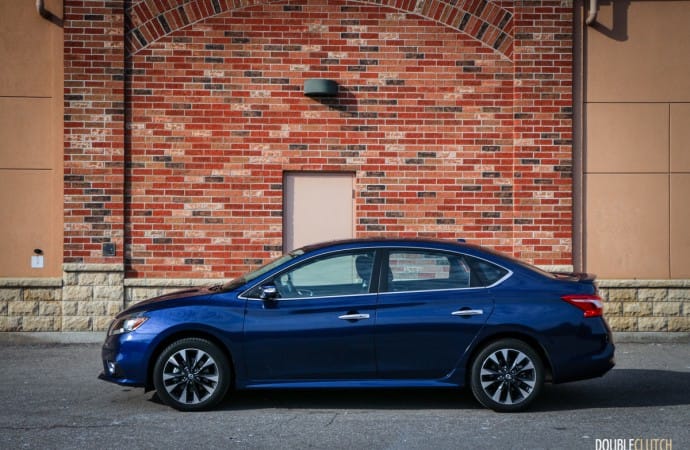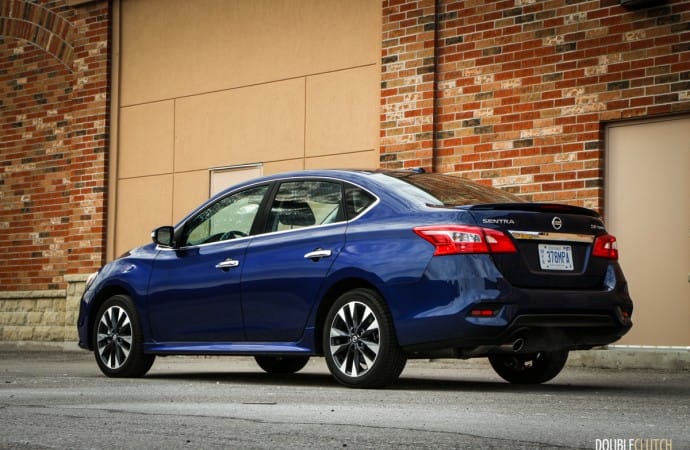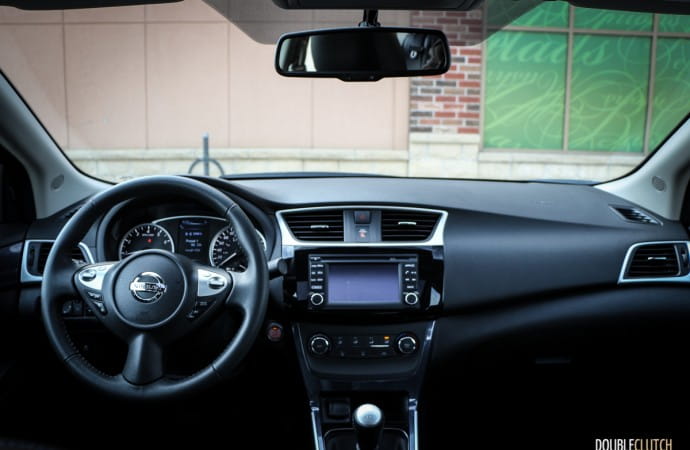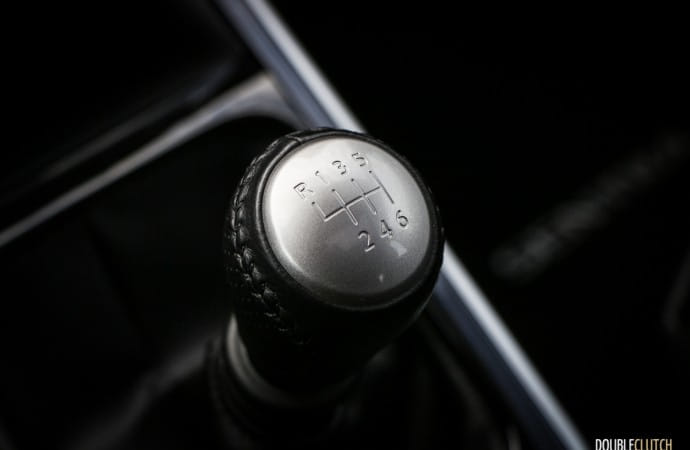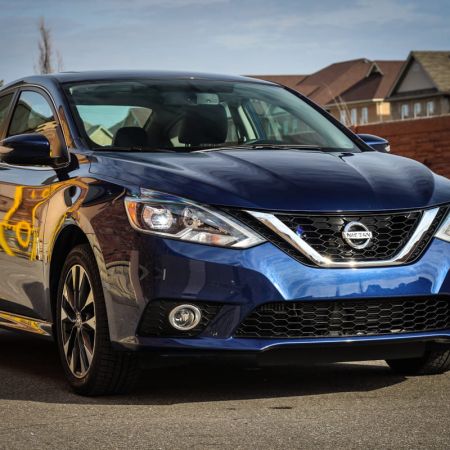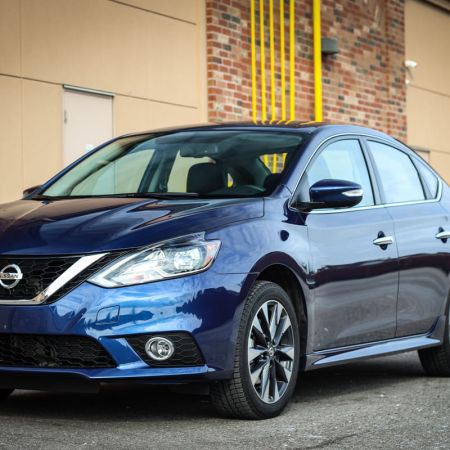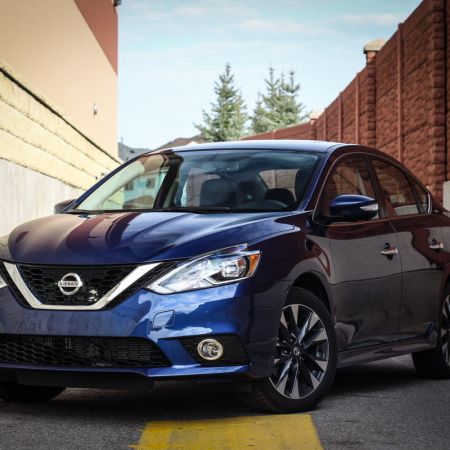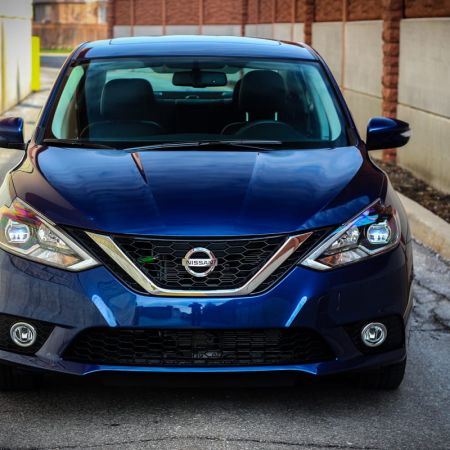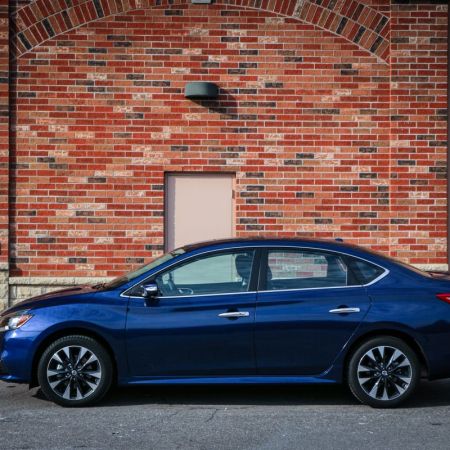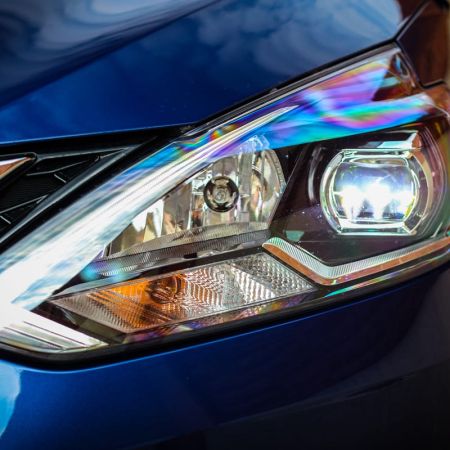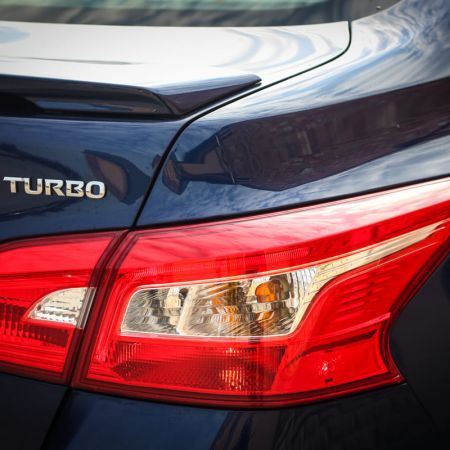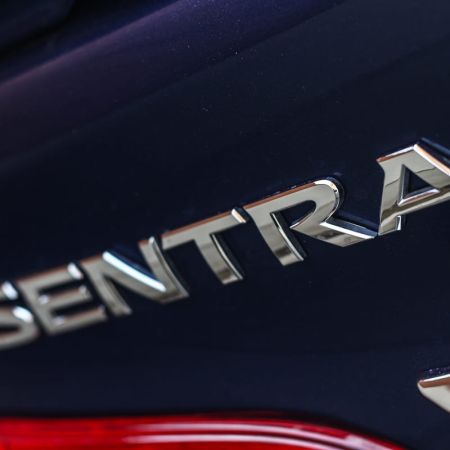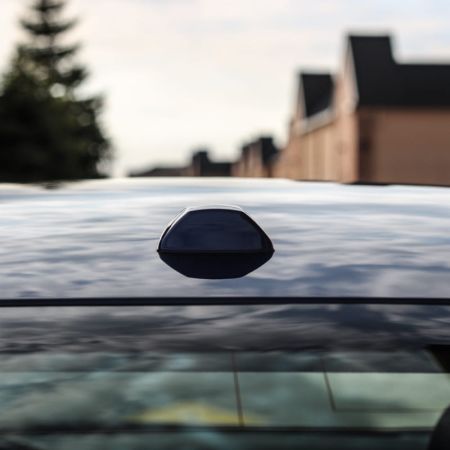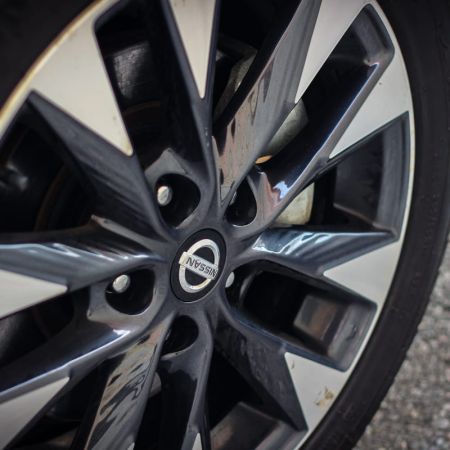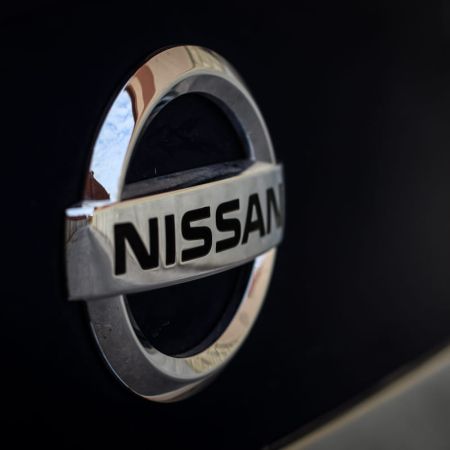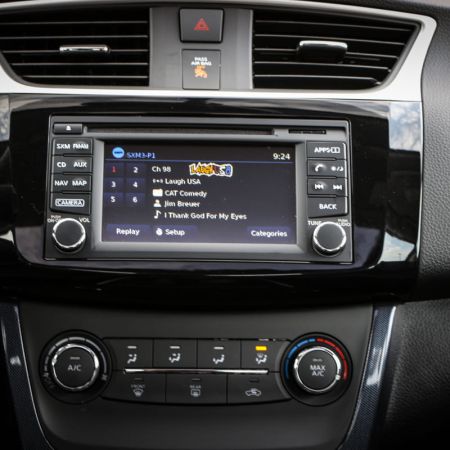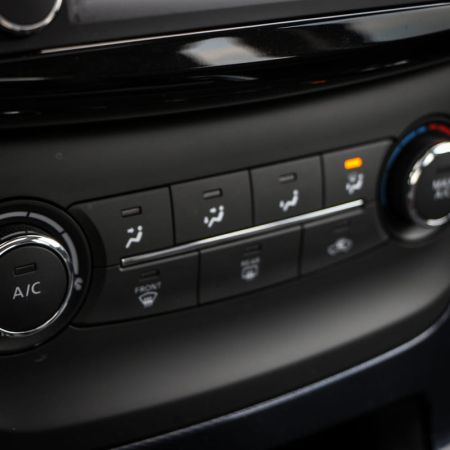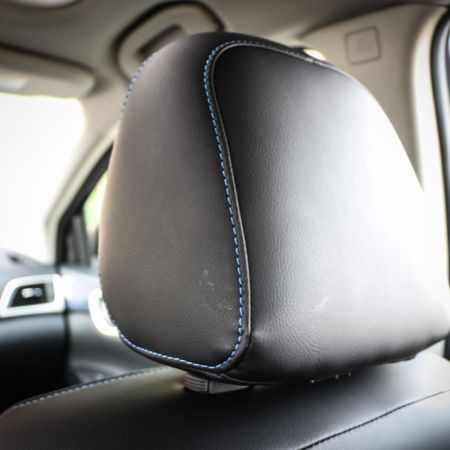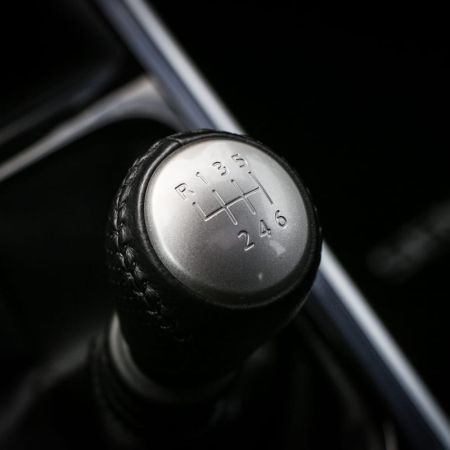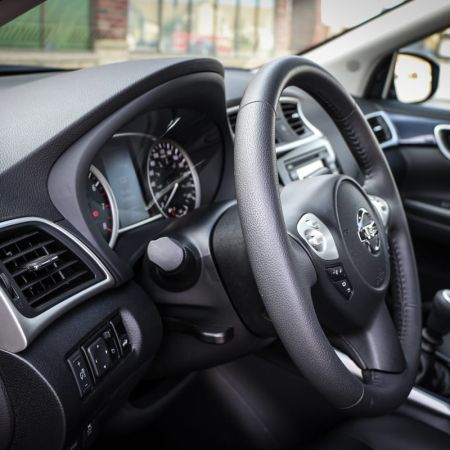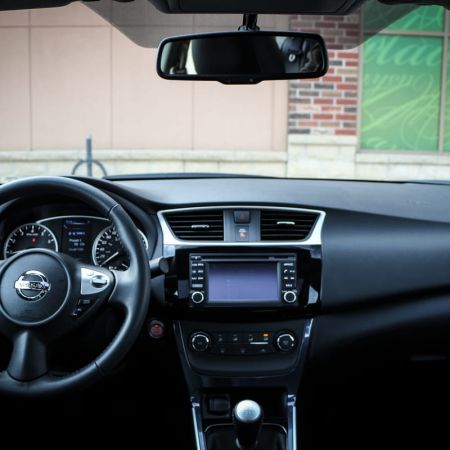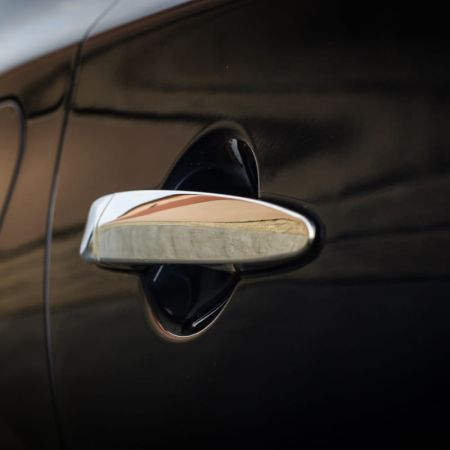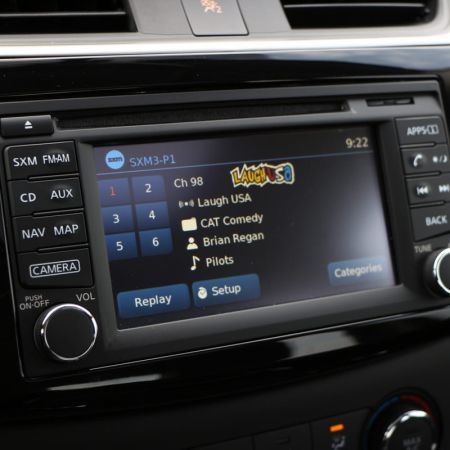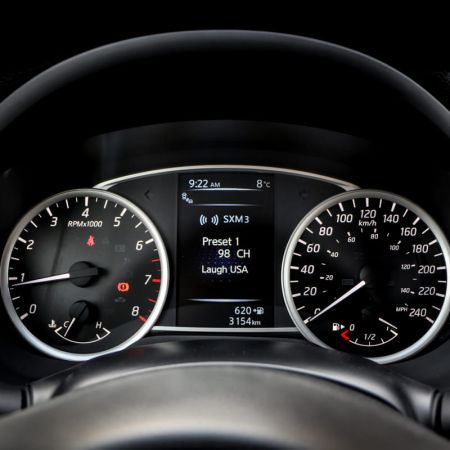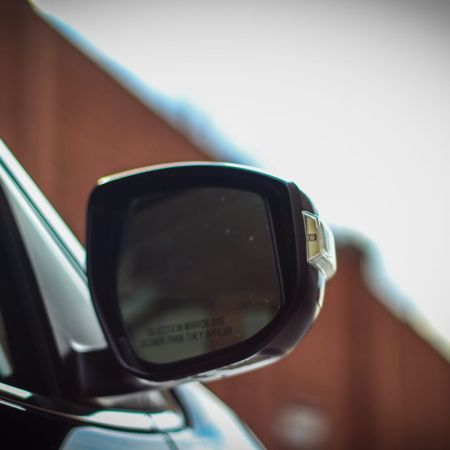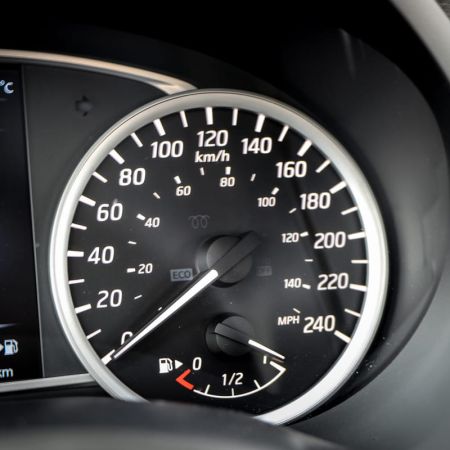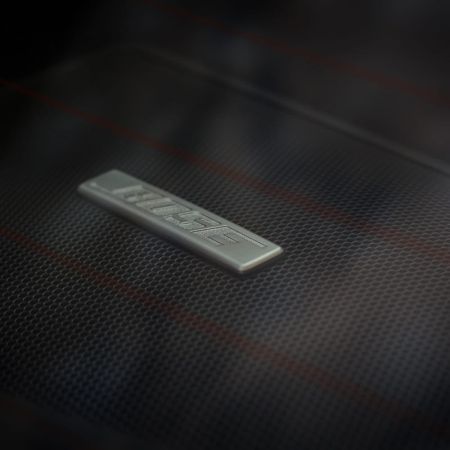The Nissan Sentra was first introduced to the North American market in May of 1982, as a direct replacement to the Datsun 210. Originally sold as a Datsun, the Sentra has, over three decades, been offered as a two-door coupé, a four-door sedan, and a five-door hatchback. It has always been a compact entry offering affordable yet reliable transportation, with 67 mind-blowing horsepower at its original debut. Since then, the Sentra has gone through six generations and the current seventh-generation car has been around since 2013, with a significant update for the 2016 model year (reviewed here).
On test here is a “Pearl Blue” 2017 Nissan Sentra SR Turbo, complete with a direct-injected and turbocharged engine. This powertrain is borrowed from the Juke, and in this particular application is mated to a six-speed manual transmission. In terms of items specific to the SR Turbo, there are blue accents, blue stitching throughout, premium leather seats, Bose premium audio with eight speakers, Nissan Connect infotainment via a 5.8” touchscreen, and unique 17” alloy wheels.
Thankfully, in lieu of the 67-horsepower engine from the 1980s, the Sentra SR Turbo comes with a 16-valve, dual-overhead cam turbocharged inline four. This motor also boasts aluminum-alloy construction and a 10.5:1 compression ratio. The zippy little turbo-four pumps out a satisfying 188 horsepower at 5,600RPM and 177 lb-ft. of torque at as little as 1,600RPM. One thing to note is that the power delivery seems a bit disappointing in the bottom end.
The Sentra Turbo doesn’t really wake up until the turbochargrer kicks in a bit higher in the RPMs (roughly 3,500RPM). Then again, this powertrain is wholly preferred over the standard naturally aspirated mill in the regular Sentra (reviewed here). The six-speed manual transmission is also identical to the one in the Juke (reviewed here), though the clutch feels a little bit too light and the shifter throws a bit on the longer side. The shift gate is narrow and not as precise as the comparable Hyundai Elantra Sport (reviewed here) or the Honda Civic LX.
Nissan has beefed up their strut-and-torsion beam suspension, with stiffer springs and dampers. They’re 23% firmer in front and approximately 50% in the rear. The Sentra Turbo rides adequately and body roll in corners is noticeably reduced over the standard model. However, seeing as this is a more performance-oriented model, it has a bit more work to do before going after rivals, with apparent understeer that can be a bit irritating to deal with.
On the plus side, Nissan has put in a larger steering motor and revised the mapping for the electric power steering system. This setup now gives significantly more feedback at higher speeds and lightens up when carefully navigating parking lots. This is a very evident improvement, one welcomed undoubtedly. Larger front rotors and pads make for impressive braking in the segment – this is probably where the SR Turbo satisfies the most. Again, there isn’t much in the way of analog feel, but that’s a given with power and electronic controls virtually everywhere. The Elantra Sport is not that much better in this regard.
Moving into the car, the SR Turbo adds the 5.0” Advanced Drive-Assist Display (ADAD) located in the instrument cluster, directly between the tachometer and speedometer. Similar to units seen in other Nissan and Infiniti vehicles, the display is a bit dated but still vastly better than some competitors. This test vehicle was also outfitted with the Premium Package, which adds the aforementioned 5.8” Nissan Connect system with navigation, blind spot monitoring, and rear cross traffic alert. It also adds leather interior, a power driver’s seat, and the Bose speakers.
The interior overall is more spacious than previous Sentra models, with ample front and rear headroom for the segment. The Sentra’s taller profile helps with this considerably, though rear legroom left a bit to be desired. Vehicles like Nissan’s own Versa Note (reviewed here) boast generous leg space for rear passengers, notably. Also observed is the tilt/telescope steering wheel, which didn’t have much fore/aft movement, making for a slightly awkward driving position depending on each driver’s dimensions.
Available in five configurations starting with the Sentra S at $15,898, most other “standard” variants of the Sentra are powered by the conventional 1.8L inline four. Stepping up to the SV model adds things like a CVT automatic transmission, Intelligent Key, and heated seats at $20,058. The SR Turbo starts at $21,598 with the 17” alloys, LED projector headlights, and of course, the turbo engine. Our test vehicle added the $3,700 Premium Package and sat right at $25,298. It’s not the most expensive Sentra available, either, because the new-for-2017 Sentra NISMO starts at $25,698 and adds a sport-tuned NISMO suspension, 18” wheels, and a few other sporty bits.
One of the huge benefits of the Sentra Turbo is the way it sips fuel. Nissan rates this model with the six-speed manual at 9.1L/100km city and 7.3L/100km on the highway. Over the test week when a genuine effort was made to conserve fuel and minimally compromise driving engagement, the result was 7.6L/100km. Staying out of turbocharger boost improves fuel economy, as well. Nissan recommends 91-octane premium fuel, on which this test was conducted, and the tank has a segment-average capacity of 50L.
Back in its heyday in the 1990s, Nissan had a real winner with the B13 Sentra SE-R. True to the heritage of that car, this 2017 Nissan Sentra SR Turbo is a sporty and slightly more premium alternative to the otherwise cookie-cutter compact sedan. This car itself isn’t the spiritual successor to the SE-R; for that the Sentra NISMO exists, but what it does offer is a bit more punch for not very much more money. With new contenders out there like the Hyundai Elantra Sport (reviewed here) and Honda Civic (reviewed here), it’ll be neat to sit back and watch the SR Turbo carve its own niche into the sporty compact class.


